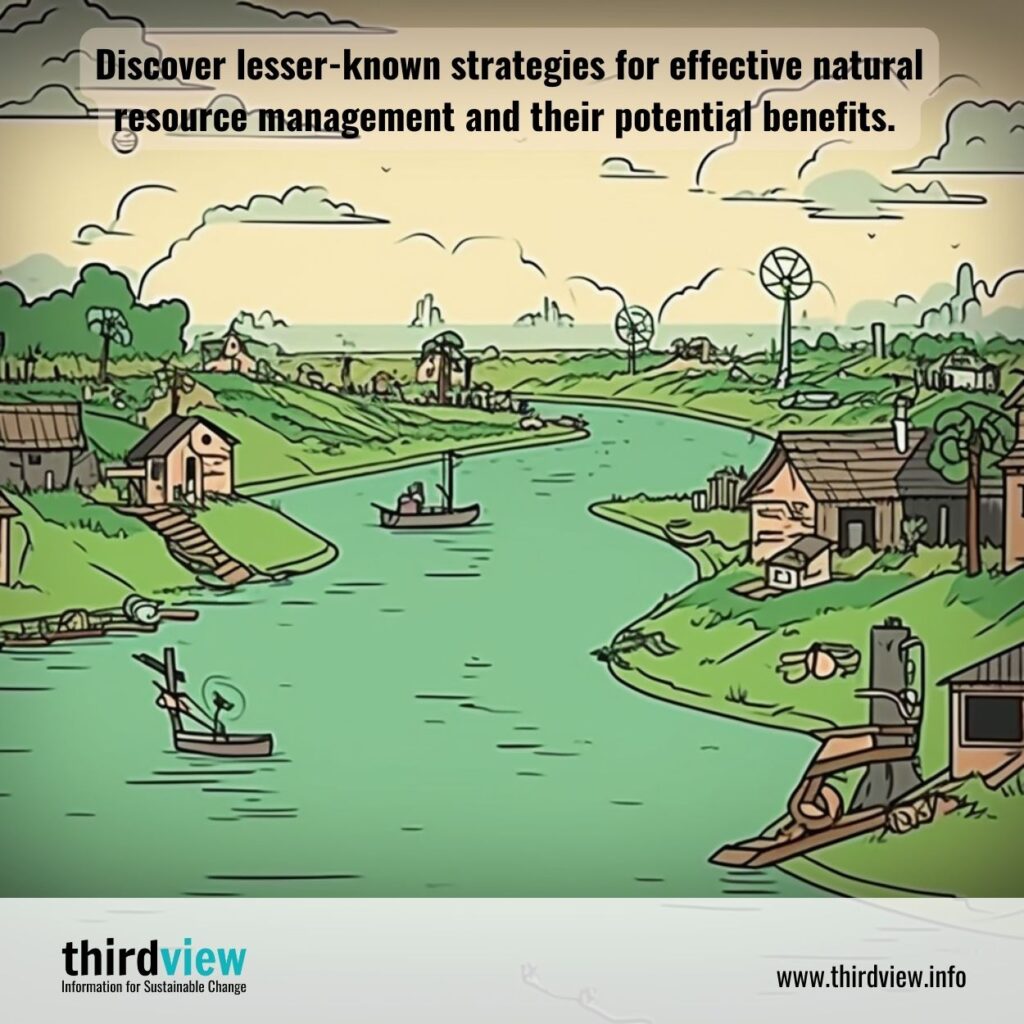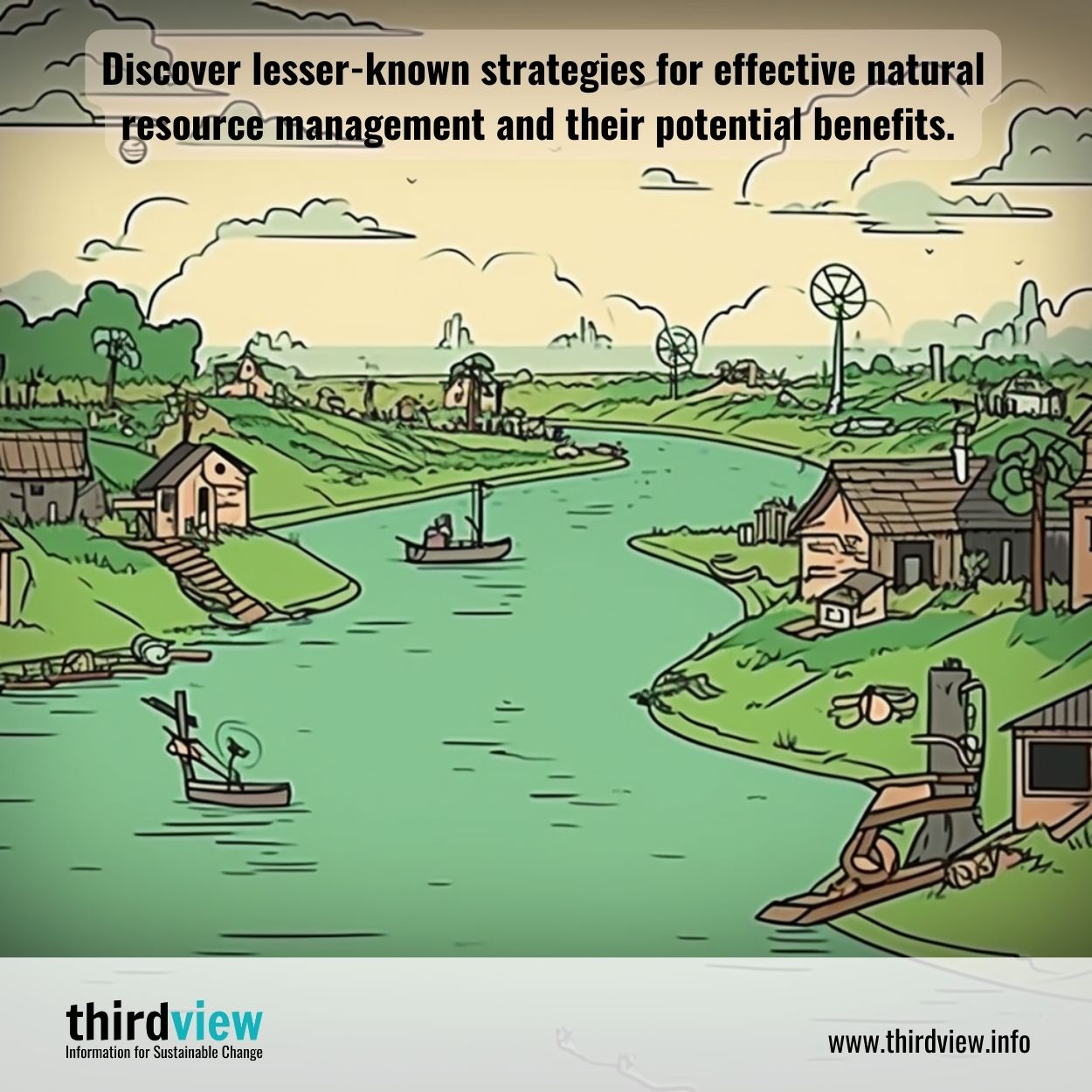Natural resources are fundamental for economies, societies, and the environment. They provide nourishment, raw materials, and energy, hence must be appropriately managed for their sustainability and the well-being of the current and future generations. Sustainable natural resource management involves preserving biodiversity, ecosystem services, and human livelihoods while balancing economic, social, and environmental objectives. Although there are many well-known strategies for natural resource management, such as conservation, restoration, and resource substitution, there are also some lesser known but effective strategies that can significantly contribute to sustainability. In this blog, we explore some of these strategies, their benefits, and potential challenges.
Collaborative Governance
Traditional top-down governance models often fail to account for the diverse perspectives and needs of different stakeholders, leading to conflicts and inefficiencies. Collaborative governance, on the other hand, involves engaging stakeholders from various sectors (e.g., government, industry, civil society, and indigenous communities) in a dialogue, negotiation, and decision-making process that is transparent, inclusive, and equitable. This approach can enhance the legitimacy, effectiveness, and adaptability of natural resource management, as it fosters trust, social learning, and collective action. However, it can also face challenges related to power imbalances, resource asymmetries, and conflicting interests.
Payments for Ecosystem Services (PES)
Many natural resources, such as forests, wetlands, and reefs, provide valuable services to society, such as carbon sequestration, water purification, and tourism. However, these services are often undervalued or even unacknowledged in economic systems, leading to their degradation or destruction. PES is a market-based mechanism that seeks to incentivize the conservation and restoration of ecosystem services by paying landowners, farmers, or other stakeholders who protect or enhance these services. PES can provide economic benefits to local communities, support biodiversity conservation, and mitigate climate change. However, it can also face challenges related to the determination of fair values, the monitoring of compliance, and the distribution of benefits.
Landscape-level Planning
Many natural resources are interconnected and function at a landscape level, such as watersheds, coastlines, or bioregions. Therefore, managing them effectively requires a holistic and integrated approach that considers their spatial and temporal dynamics, as well as their multiple uses and stakeholders. Landscape-level planning involves mapping, assessing, and prioritizing natural resources and their functions, and coordinating their management across multiple jurisdictions and sectors. This approach can enhance the resilience, connectivity, and sustainability of natural resources, as it addresses fragmentation, overlap, and trade-offs. However, it can also face challenges related to conflicting policies, interests, and capacities.
Adaptive Management
Natural resource management is often subject to uncertainty, complexity, and surprise, such as changing climate patterns, invasive species, or political events. Traditional management approaches often assume a static and predictable environment and attempt to optimize solutions based on current knowledge and objectives. Adaptive management, on the other hand, accepts the uncertainty and complexity of natural systems and seeks to learn from their feedback through iterative and flexible processes. This approach involves monitoring, evaluating, and adjusting management actions in response to new information, signals, and surprises. Adaptive management can enhance the resilience, learning, and innovation of natural resource management, as it promotes experimentation, continuous improvement, and stakeholder participation. However, it can also face challenges related to the availability and quality of data, the willingness to take risks, and the resistance to change.
Natural resource management is critical for sustaining the human and natural systems that depend on them. It requires strategic, innovative, and inclusive approaches that balance economic, social, and environmental objectives. While there are many well-known strategies for natural resource management, such as conservation, restoration, and resource substitution, there are also some lesser known but effective strategies that can significantly contribute to sustainability. Collaborative governance, payments for ecosystem services, landscape-level planning, and adaptive management are examples of such strategies. However, each of them faces potential challenges related to different contexts, scales, and stakeholders. Therefore, the implementation of these strategies requires careful assessment, planning, and monitoring, as well as the participation and empowerment of local communities. By adopting these strategies, we can move toward a more resilient, just, and sustainable future for people and the planet.


